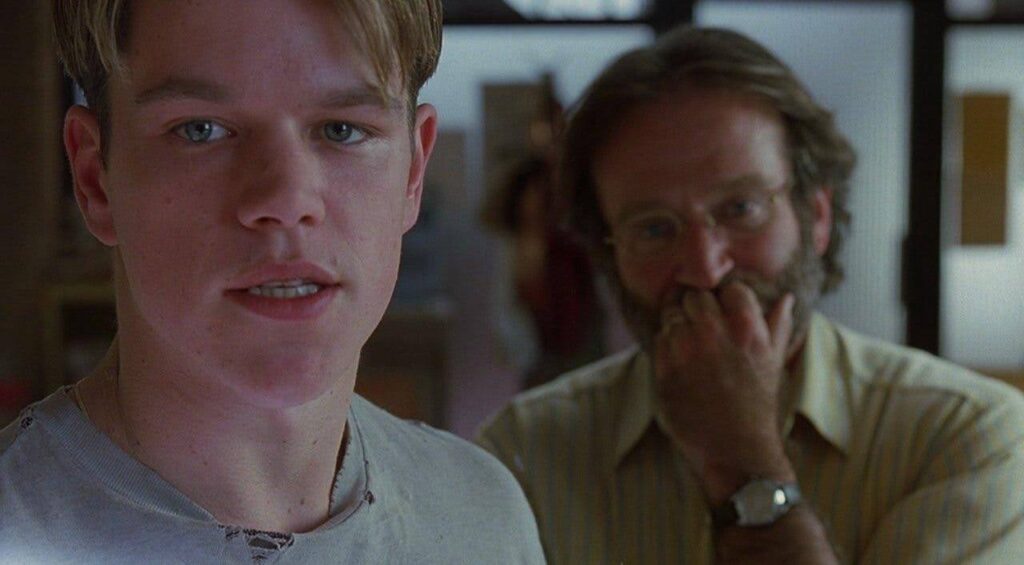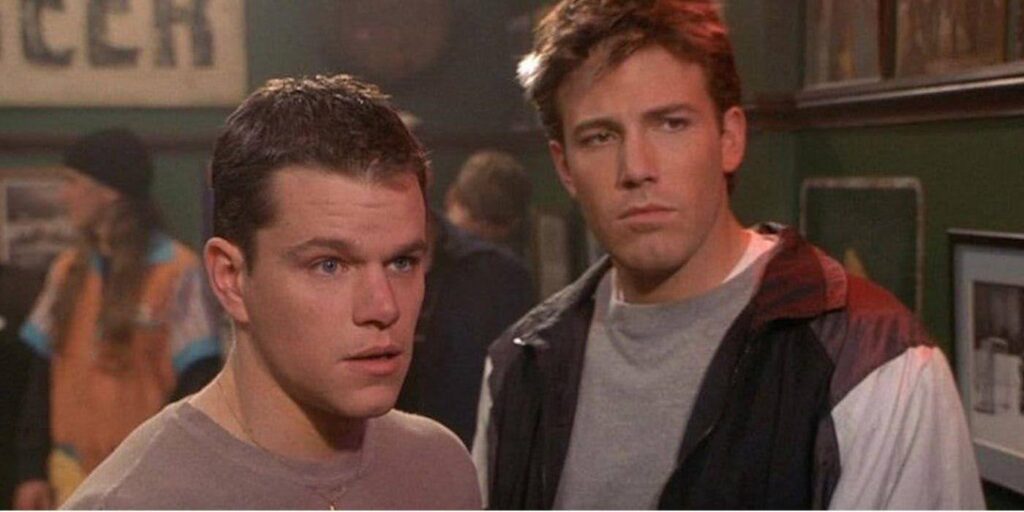
This is Part 6 of our Screenwriting Series: Learning to write for every genre
Start from the beginning here!
Introduction: The Power of Drama in Storytelling
Drama has always been at the core of storytelling, exploring deep emotions and the complexities of human experience from the highs to the lows.
While comedy, action and fantasy movies captivate us with spectacle, thrill and humor, drama is where we’re able to take a step back to consider life’s questions and spend time with authentic and emotionally engaging characters.
Dramas are unapologetically raw. Think The Pursuit of Happyness (2006) or A Beautiful Mind (2001), both movies that tackle profound human struggles from poverty and mental illness to unwavering ambition and a quest for self-worth.
While all stories must have conflict, it doesn’t mean that they’re inherently sad, but tap into universal emotions from despair to hope, love to hate, resilience to defeat. The power of drama lies in its ability to help us reflect on our own lives and engage in our emotions for a long time after we leave the movie theater.
Our job as writers in the drama genre is to create these characters that resonate with the audience and take them on a journey that’s not too dissimilar to our own. Drama relies on what makes us inherently human, and for me, that makes it the most exciting and fascinating genre of all.

All sounds like pretty heavy stuff, right? Never fear, because in today’s article, (and part 6 of our series ‘Mastering the Art of Screenwriting’) we’ll dive into the art of writing a drama screenplay and how you can create compelling characters, a powerful narrative and dialogue that’ll keep your audience on the edge of their seats.
Understanding Drama as a Genre
We know emotional depth and character are what makes drama tick, and sets it apart from its thriller, action, horror and comedy counterparts.
The stakes in any drama story are deeply personal, the audience’s emotional connection to the characters being the most important aspect and focus for us as screenwriters.
We follow our characters on an emotional journey. Whether they’re struggling with loss, finding their identity, or on a quest to change themselves, drama combines both their internal and external conflict to challenge them in their endeavor.
A protagonist’s relationship with other characters in the story is also a key consideration. How they interact and develop together across the course of the story is paramount.
Drama is often regarded as a ‘universal’ genre, encompassing many others, and being a basis for sub-genres. But just how does it compare to its comedy, action and sci-fi/fantasy siblings?
While comedy relies on humor and exaggerates real-life situations for laughs, drama turns this completely on its head, digging into serious emotions. Yes, drama can have lighter moments, these are usually fleeting, quickly returning to the seriousness of the situation. These moments often provide relief from the conflict, rather than rely on comedy.
External conflicts tend to take center stage in action movies, whereas drama focuses more on internal conflict. The external conflict then becomes a secondary element to support this.
Arguably, drama plays a key role in sci-fi and fantasy. While the characters inhabit a completely different world with its own rules and conventions, their journeys often remain grounded in the real human experience, an essential factor in ensuring the audience resonates with the overall story. Think of Frodo’s journey of sacrifice in The Lord of the Rings (2001-2003) or Neo’s quest for self-understanding in The Matrix (1999).

Use Celtx beat sheets to structure your dramatic arc
Building Strong Characters for Drama
Character is the foundation for great drama. Without fully realized, emotionally complex protagonists and antagonists, our stories would fall flat. Our characters aren’t just vessels for the plot but are the plot itself.
Let’s first look at how we can bolster the driving force for our stories: our protagonist.
Developing a Complex Protagonist
An audience must be able to relate to our protagonist and resonate with the innate struggle they’ve found themselves battling. We don’t necessarily need to share the same circumstances with them but need to relate to their internal struggle that makes them feel authentically human.
If we return to The Pursuit of Happyness and protagonist Chris Gardner, we can see that while not all of us may not directly understand his struggle to provide for his son, it’s his journey and how he gets to where he needs to be that is emotionally resonant and wills us to follow him from beginning to end.
Our protagonists should always have a clear goal or need, the pursuit of that goal complicated by personal flaws, fears or past traumas that prevent them from reaching it. Here is where the tension grows, forcing our protagonist to grow and change. Ultimately, they experience an emotional transformation by the end of the story.
Pat Solitano in Silver Linings Playbook (2012) is a key example of a strong dramatic character arc. We meet him as he’s released from a psychiatric institution, his goal to reconcile with his estranged wife, Nikki.
Now living with his parents, Pat must adjust to his living back with his parents and managing his bi-polar disorder. After meeting Tiffany who’s going through similar struggles, Pat finds a sense of balance by the end of the movie, realizing that while things may never be perfect, there’s beauty in the messiness of life. He learns to accept imperfection and learns to move forward.

Desperate to escape his past trauma because of abuse and foster homes, an angry and defensive Will Hunting in Good Will Hunting (1997) keeps himself to himself as a janitor at MIT. It’s only when his mathematical genius is discovered and through therapy with Sean Maguire, Will confronts his childhood scars and begins to take responsibility for his future. His journey is one of courage and healing, realizing what he must do to move forward.

Notice there aren’t car chases and explosions and mystical creatures to contend with, but this is the beauty of character in the drama genre. It can be even more powerful if we just focus on the internal workings of the human condition through the protagonists we create. Their journeys are driven through internal conflict, not just external obstacles.
Need further insight into how to develop your protagonist? We have a blog for that! Check it out here.
Creating a Compelling Antagonist
The antagonist doesn’t always need to be the quintessential evil villain, but rather something that stands in the way of our protagonist’s emotional growth. They could be a person (parent, partner, rival etc.) or an abstract concept (time, addiction, self-doubt etc.)
What’s important is that our antagonists are just as complex as our protagonists and challenges our protagonist to confront something deep within themselves.Let’s consider the antagonist in 12 Years a Slave (2013) which doesn’t present itself as one specific person. Rather, it’s protagonist Solomon Northup’s past life and the brutal institution of slavery that antagonizes him throughout the movie. It’s the past institution that serves as the primary antagonist, challenging Solomon’s survival, morality and sense of self.

We of course have a blog all about antagonists, if you’d like to delve a little deeper into what makes them tick.
Plot Structure in Drama
A well-structured dramatic screenplay carefully builds tension and releases it at key moments, giving the audience time to absorb the emotional weight of the story. How we progress the plot emotionally is important, with key components to help us along the way.
The three-act structure is the most recognized approach to structuring a drama screenplay, breaking the story up into setup, confrontation and resolution.
Act I (Set Up)
We meet our protagonist, gaining an insight into their world and their problem/goal. It’s the inciting incident that sets them up on their emotional journey. In The Pursuit of Happyness, the inciting incident occurs as Chris loses his job and must find a new way to provide for his son.
Act II (Confrontation)
Here is where the meat of the story plays out and where our protagonist encounters most of their obstacles through doubt and conflict. Continuing with The Pursuit of Happyness, we see Chris and his son evicted from their apartment as he tries to keep up with his internship; only one intern will be chosen for a full-time paid position at the end of the program, so he needs to make a good impression. The stakes are high.
Act III (Resolution)
The protagonist either confronts their internal and external conflicts head on, or succumbs to them, and we see the consequences of their decision. In The Pursuit of Happyness, Chris finally secures the job he’s worked so hard for, symbolizing his emotional and financial victory.
Again, there are no crazy car chases, or magic involved – just a regular, relatable man playing with the cards he’s dealt, which all of us can relate to in some way.
Set the scene for impact.
Start writing your script with Celtx today.
Writing Effective Dialogue in Drama
We see many of these beloved characters through dialogue and how they interact with others around them. It reveals emotions, relationships and inner turmoil.
What a character doesn’t say, i.e. subtext, is just as important as what they do say. While they may say one thing, they could feel or believe in something entirely different, much like we do in real life! Body language, varying levels of eye contact and tone can make all the difference.When writing dialogue for our characters, it needs to feel natural and authentic. Consider how you can reveal details about the plot and character through nuance rather than outright statements. Even the simplest of exchanges can have emotional subtext simmering beneath the surface. Just listen to this conversation between Mark Zuckerberg and Eduardo Saverin expertly crafted by writer Aaron Sorkin for The Social Network (2010). We’ve also included the section from the screenplay so you can see how it’s set out on the page.


This specific moment in the movie is emotionally charged, but we can hear the intention and underlying meaning in each of the characters’ words.
Both Mark and Eduardo have a clear agenda coming into the conversation, both defaulting to their individual reasoning to persuade the other to see their point of view. Notice how Mark dominates the conversation despite Eduardo’s anger. Mark speaks for a longer amount of time towards the end of the exchange, revealing his sense of superiority without directly spelling it out in his dialogue.

Dialogue should never be written for the sake of it and each line should push their motivation forward. In every scene our characters should want to achieve something, even if we don’t overtly reveal it. We should be fully aware of what this is for every character in every scene and use this knowledge to inform your writing decisions.
Format your dialogue easily with Celtx screenwriting software.
Sign up for free today!
Creating Tension and Conflict
Character is drama. If our characters don’t have opposing goals or views, it’s going to be very difficult for us to breed tension in our stories.
Moral dilemmas and opposing internal ideas are great ways to create tension. Our characters could be torn between their desire for success and their love for a family member, or could struggle with feelings of guilt, shame or unworthiness. These inner conflicts then manifest in the way our characters interact with each other and make key decisions.
Good Will Hunting captures such tension extremely well in the bar scene. Will and best friend Chuckie are hanging out at a bar when Chuckie is approached by an arrogant Harvard student as he tries to chat up girls. Will sees this challenge as an opportunity to assert his intelligence and shut down the student’s arrogance. A verbal duel commences…
Not only does this serve as a tense manifestation of the external conflict Will experiences but also highlights the tension within himself, and his fear of intimacy, vulnerability and failure. Chuckie grows concerned for his friend as the debate intensifies, proud of Will’s genius but worried he’s wasting his potential, hence more tension is created later as the best friends butt heads.

This could also be heightened by external conflict, and tension between characters. Whether it’s a couple fighting over trust issues, a parent-child struggle or a rivalry, conflict keeps the narrative emotionally charged, allowing for a push and pull effect.
For more on building tension in drama scripts – check out our guide here.
Conclusion: Bringing Your Drama to Life
Writing a drama screenplay is an exercise in emotional storytelling. It’s about understanding our characters deeply and structuring our narrative to heighten their struggles and triumphs. Drama is complex and layered, but when done well, it resonates with audiences in a way few other genres can.
Start drafting your drama script today and let Celtx help you map out your story from start to finish!
Up Next:

From Meet Cutes to Happy Endings: How to Write a Rom-Com Script
From chemistry to dialogue, learn how to craft a rom-com script that steals hearts — and how Celtx can help bring your story to life.
Or dive into other genres with the rest of our screenwriting series:
- Part 1: Mastering the Art of Screenwriting
- Part 2: From Dreams to Screams: How to Write a Horror Script
- Part 3: From Dreams to Screams: How to Write a Horror Script, Part 2
- Part 4: Beyond the Stars: How to Write a Science Fiction Script
- Part 5: Laugh out Loud: How to Write a Comedy Script
- Part 8: Crafting Magic: How to Write a Holiday Movie Script
- Part 9: How to Write a Documentary Script: A Step-by-Step Guide
- Part 10: How to Write a Skit That Lands Every Time
- Part 11: How to Write a Romance Script that Sweeps Audiences Away
- Part 12: From Clues to Conclusions: How to Write a Mystery Script
- Part 13: From Song to Stage: How to Write a Musical Script
- Part 14: From Zero to Hero: How to Write an Action Movie Script

